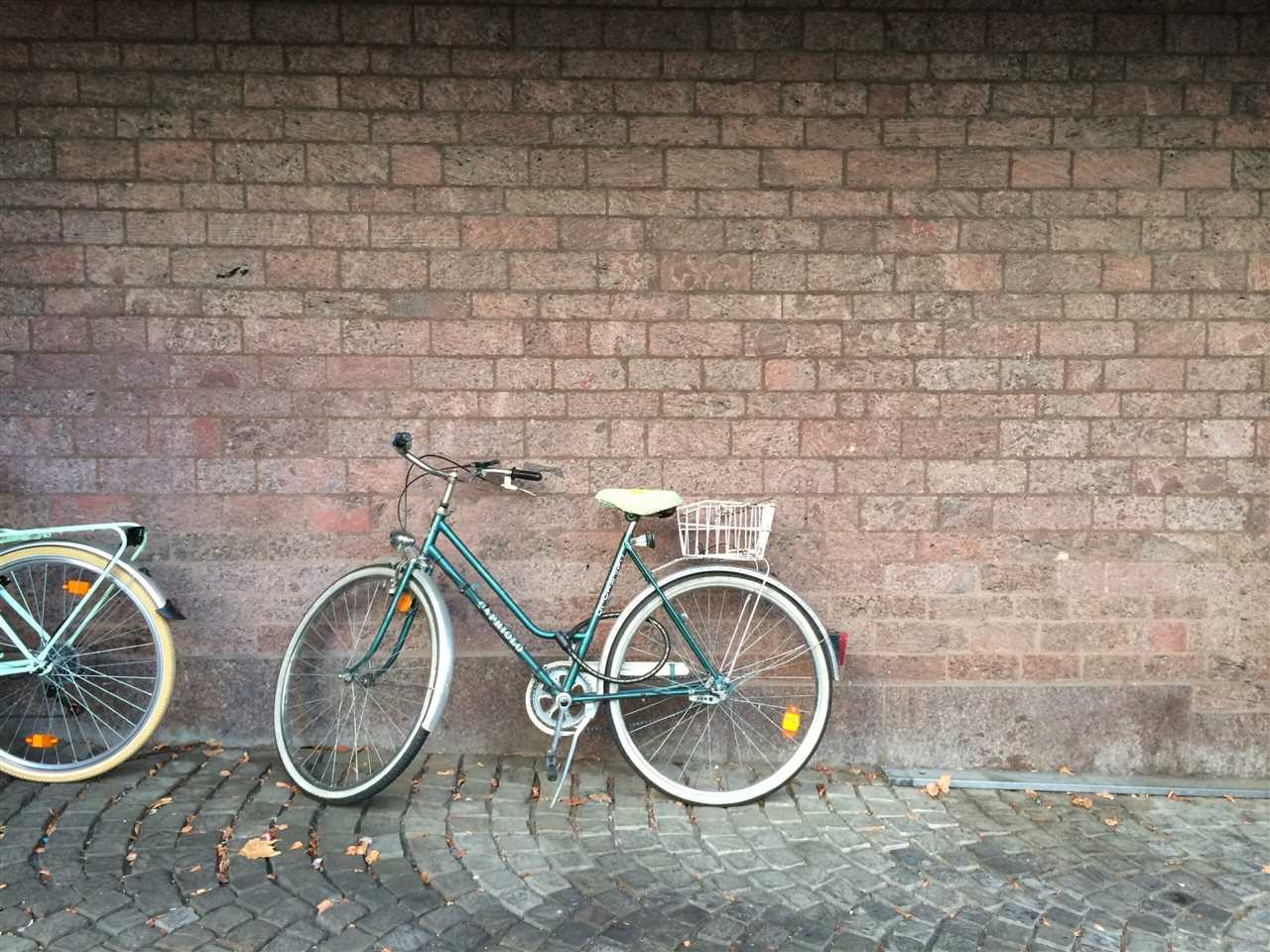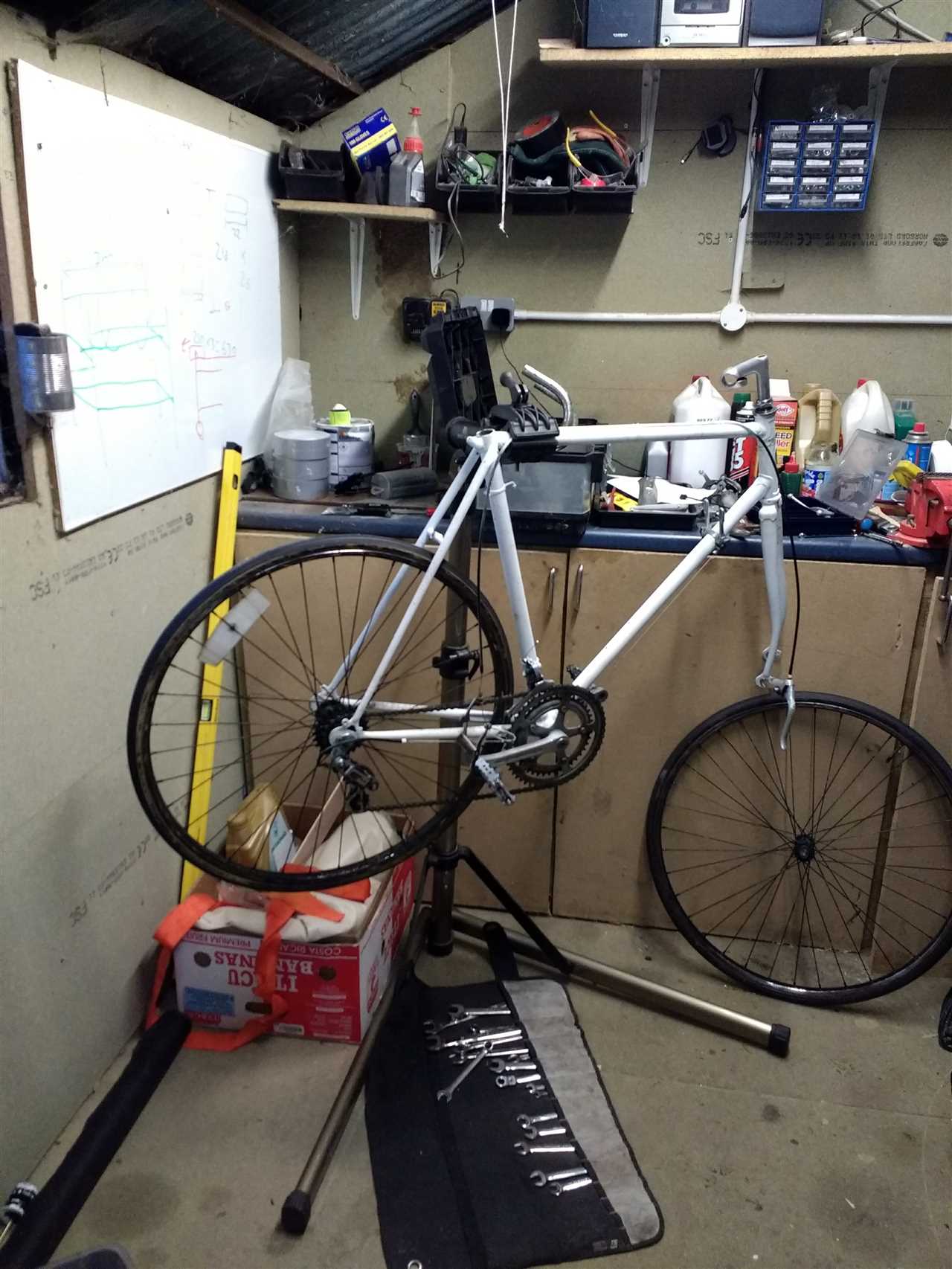Do you have an antique bicycle that has seen better days? Are you looking to restore, repair, rebuild, renovate, refurbish, or recondition it to its former glory? Look no further! In this article, we will provide you with a comprehensive guide on how to bring old bikes back to life.
Restoring a bicycle can be a rewarding and fulfilling project. Not only will you be able to revive a piece of history, but you will also gain valuable knowledge and skills in the process. Whether you have a vintage road bike, a classic cruiser, or a retro mountain bike, these tips and techniques will help you transform it into a functional and beautiful ride.
First and foremost, it is important to assess the condition of your bicycle. Take a close look at its frame, wheels, drivetrain, and components. Identify any areas that require repair or replacement. Rust, corrosion, and worn-out parts are common issues that need to be addressed. Once you have a clear understanding of the work that needs to be done, you can start gathering the necessary tools and materials.
When it comes to restoration, attention to detail is key. Clean every nook and cranny of your bicycle using mild soap and water. Remove any dirt, grime, or grease that may have accumulated over the years. For stubborn stains, use a non-abrasive cleaner. Don’t forget to polish the chrome parts to bring back their shine. Additionally, consider repainting the frame to give your bicycle a fresh and vibrant look.
In conclusion, restoring an old bicycle is a labor of love. It requires patience, time, and effort. However, the end result is well worth it. By following these tips and techniques, you will be able to breathe new life into your antique bike and enjoy riding it for many more years to come. So grab your tools, roll up your sleeves, and get ready to embark on a journey of bicycle restoration!
Contents
Choosing the Right Bike for Restoration
When it comes to bicycle restoration, finding the right bike to work on is essential. Whether you’re a vintage bike enthusiast or simply looking to repair and renovate an old bicycle, selecting the right project can make all the difference in the success of your restoration.
First and foremost, consider the level of repair and refurbishment you’re willing to undertake. Some antique bikes may require extensive restoration work, including replacing parts, repainting, and rebuilding the entire bike from scratch. Others may only need minor repairs and cleaning to bring them back to their former glory.
It’s also important to consider your own skill level and experience with bicycle restoration. If you’re new to the process, it may be best to start with a bike that only requires minimal repairs. This will allow you to familiarize yourself with the restoration techniques and gain confidence before taking on more challenging projects.
Another factor to consider is the availability of replacement parts for the bike you choose. Some vintage bicycles may have rare or hard-to-find parts, which can make the restoration process more difficult and costly. Before committing to a bike, do some research to ensure that the necessary parts are readily available or can be easily sourced.
Lastly, consider your personal preferences and interests. Choose a bike that you feel a connection to, whether it’s because of its unique design, historical significance, or sentimental value. Enjoying the restoration process and being passionate about the bike you’re working on will make the project more rewarding and enjoyable.
Overall, choosing the right bike for restoration is a crucial step in the process. Take the time to consider the level of repair required, your own skill level, the availability of replacement parts, and your personal preferences. With the right bike in hand, you’ll be well on your way to a successful and satisfying restoration project.
Researching Different Bike Brands and Models

When it comes to the renovation and restoration of vintage bicycles, it is important to do thorough research on different bike brands and models. Understanding the history and unique characteristics of each brand and model can greatly assist in the reconditioning process.
One of the first steps in researching different bike brands and models is to determine the era or time period in which the bicycle was produced. This information can help identify the appropriate restoration techniques and parts needed for the rebuild. Additionally, knowing the era can also give insight into the overall value and desirability of the antique bicycle.
Another important aspect of researching bike brands and models is to familiarize oneself with the various manufacturers and their reputations. Some brands may be known for their high-quality craftsmanship, while others may have a reputation for using lower-quality materials. Understanding these differences can help guide the refurbishment process and ensure that the final result is a well-built and reliable bicycle.
Additionally, researching bike brands and models can also provide valuable information on the availability of replacement parts. Some vintage bicycles may require specific parts that are no longer in production, making it necessary to search for alternative sources or consider custom fabrication. Knowing the availability of parts upfront can help avoid delays and frustrations during the restoration process.
In conclusion, researching different bike brands and models is an essential step in the restoration of vintage bicycles. It provides valuable insights into the history, unique characteristics, and reputation of each brand and model. This knowledge can guide the renovation process and ensure the final result is a properly rebuilt and refurbished antique bicycle.
Evaluating the Condition of the Bike
Before starting the vintage bicycle repair and restoration process, it is essential to evaluate the overall condition of the bike. This evaluation will help determine the extent of the repairs and restoration needed, as well as the level of effort and resources required for the reconditioning and refurbishment.
Begin by thoroughly inspecting the bicycle frame for any signs of damage, such as cracks or bends. Check if the frame is structurally sound and assess whether it requires any repairs or reinforcement. Additionally, examine the paintwork for any chips, scratches, or rust spots that may need attention during the restoration process.
Next, evaluate the bicycle’s components, including the wheels, brakes, drivetrain, and handlebars. Check if these parts are in working condition and assess whether they need any repairs, replacements, or adjustments. Pay close attention to the condition of the gears, chain, and brakes, as these are critical components for safe and efficient cycling.
Inspect the bicycle’s seat, pedals, and grips, and determine if they need replacement or refurbishment. These components not only affect the bike’s comfort but also contribute to its overall aesthetic appeal. Consider whether the vintage bicycle restoration should include finding authentic replacement parts or if modern alternatives can be used without compromising the bike’s authenticity.
Finally, assess the overall cleanliness of the bike. Determine if it requires a thorough cleaning or if it needs more extensive renovation, such as sanding and repainting. Cleaning the bicycle will provide a better understanding of its condition and will help identify any hidden issues that may not be immediately apparent.
By carefully evaluating the condition of the bike, you can create a comprehensive plan for its repair and restoration. This evaluation will guide you in determining the necessary steps, materials, and expertise required to rebuild the bicycle and bring it back to its former glory.
Considering the Availability of Spare Parts

When embarking on a vintage bicycle restoration project, one of the crucial factors to consider is the availability of spare parts. Restoration, refurbishment, repair, recondition, and rebuilding of antique bikes require the use of specific components that might not be readily available.
Before starting the renovation process, it is essential to research and determine the availability of spare parts for the particular make and model of the bicycle. This can be done by consulting with local bike shops, online forums, and vintage bike enthusiasts.
It is common for certain parts of vintage bicycles to be discontinued or extremely rare, making them difficult to find. In such cases, alternative solutions may need to be explored, such as finding compatible parts that can be modified or fabricated to fit the bike.
Additionally, it is advisable to create a list of the required parts and their availability before beginning the restoration. This will help in assessing the feasibility of the project and avoiding any potential setbacks or delays.
Furthermore, connecting with other bike restoration enthusiasts and joining online communities can provide valuable insights and resources for locating rare or hard-to-find spare parts. These communities often have members who specialize in sourcing and selling vintage bike components.
In conclusion, when undertaking a vintage bicycle restoration, it is crucial to consider the availability of spare parts. This will ensure a smoother renovation process and increase the chances of successfully bringing the old bike back to life.
Essential Tools and Equipment for Bicycle Restoration

When it comes to restoring vintage bicycles, having the right tools and equipment is essential. Whether you are looking to repair a classic antique bike or rebuild a rusty old bicycle, having the proper tools can make all the difference in the success of your restoration project.
Here are some essential tools and equipment that every bicycle restoration enthusiast should have:
1. Wrench Set: A good set of wrenches is crucial for loosening and tightening nuts and bolts during the restoration process. Make sure to have a variety of sizes to accommodate different parts of the bicycle.
2. Screwdriver Set: Having a set of screwdrivers with different types and sizes of tips will come in handy for removing and installing screws on various parts of the bicycle.
3. Pliers: Pliers are versatile tools that can be used for gripping, bending, and cutting wires or cables. They are useful for handling small parts and making adjustments during the restoration process.
4. Allen Key Set: Allen keys, also known as hex keys, are essential for working with bolts that have hexagonal sockets. Make sure to have a set of different sizes to accommodate different parts of the bicycle.
5. Chain Tool: A chain tool is necessary for removing and installing bicycle chains. It allows you to easily break the chain, replace damaged links, or adjust the length of the chain.
6. Tire Levers: Tire levers are used for removing and installing tires on bicycle rims. They help prevent damage to the rims and make the process easier and more efficient.
7. Cleaning Supplies: Properly cleaning the bicycle is an important step in the restoration process. Having cleaning supplies such as degreaser, brushes, and rags will help you remove dirt, grime, and rust from the vintage bike.
8. Lubricants: Lubricants, such as chain oil and grease, are essential for ensuring smooth operation of the bicycle’s moving parts. Applying lubricants will help reduce friction and prevent premature wear and tear.
9. Paint and Brushes: If you are planning to repaint the bicycle, having the right paint and brushes is crucial. Make sure to choose paint that is suitable for bicycles and brushes that are suitable for the type of paint you are using.
10. Safety Gear: Last but not least, don’t forget about safety gear. When working on a bicycle restoration project, it is important to protect yourself. Wear safety goggles, gloves, and a dust mask to protect your eyes, hands, and lungs from any potential hazards.
Remember, having the right tools and equipment will make your bicycle restoration project much easier and more enjoyable. So, make sure to invest in quality tools and take the time to learn how to use them properly. Happy restoring!
Basic Tools for Disassembly and Cleaning
Restoring an antique bicycle requires a set of basic tools to disassemble and clean each component. These tools are essential for reconditioning, rebuilding, and restoring vintage bikes to their former glory. Whether you’re a seasoned restoration expert or a beginner, having the right tools will make the process much easier and more efficient.
Here are some essential tools you’ll need for the disassembly and cleaning process:
- Screwdrivers: A set of screwdrivers with different sizes and types of heads is essential for removing and tightening screws on various parts of the bicycle.
- Allen wrenches: Allen wrenches, also known as hex keys, are necessary for loosening and tightening bolts on handlebars, seatposts, and other components.
- Adjustable wrench: An adjustable wrench is useful for holding and turning nuts and bolts that require a larger size than the Allen wrenches can handle.
- Pliers: Pliers are versatile tools that can be used for gripping and pulling small parts, such as cables and brake levers.
- Chain tool: A chain tool is essential for removing and installing bicycle chains, allowing for cleaning and lubrication.
- Brushes: Different types of brushes, such as toothbrushes and larger cleaning brushes, are necessary for scrubbing away dirt and grime from various components.
- Grease: High-quality grease is essential for lubricating moving parts, such as bearings and threads, during reassembly.
- Cleaners and solvents: Specific cleaners and solvents designed for bicycle components are necessary for removing stubborn dirt and old grease.
- Rags: Rags or shop towels are essential for wiping down parts and cleaning up any spills or excess grease.
By having these basic tools on hand, you’ll be well-equipped to tackle the disassembly and cleaning process of your vintage bicycle renovation. Remember to use caution and follow proper safety guidelines when working with tools and chemicals.
Specialized Tools for Repairing and Replacing Components
When it comes to the restoration, repair, renovation, refurbishment, or reconditioning of antique bicycles, having the right tools can make all the difference. Here are some specialized tools that every bicycle enthusiast should have in their toolbox:
- Bike Stand: A bike stand is essential for holding the bicycle steady while you work on it. It allows you to easily access all the components and makes the repair or replacement process much easier.
- Chain Breaker: A chain breaker is used to remove and install bicycle chains. This tool is especially useful when you need to replace a worn-out chain or shorten a new chain to the correct length.
- Crank Puller: A crank puller is used to remove the cranks from the bottom bracket of the bicycle. This tool is necessary when you need to replace the crankset or service the bottom bracket.
- Spoke Wrench: A spoke wrench is used to adjust the tension of the spokes in the wheel. It is essential for truing the wheel and ensuring that it spins straight and true.
- Headset Wrench: A headset wrench is used to adjust the headset bearings. It is necessary when you need to replace the headset or service the bearings.
- Bottom Bracket Tool: A bottom bracket tool is used to remove and install the bottom bracket of the bicycle. This tool is essential when you need to replace the bottom bracket or service the bearings.
- Cable Cutter: A cable cutter is used to cut the cables and housing of the bicycle. It is necessary when you need to replace the cables or install new ones.
- Tire Levers: Tire levers are used to remove and install bicycle tires. They make the process much easier and prevent damage to the rims.
These are just a few examples of the specialized tools that can make the restoration, repair, renovation, refurbishment, or reconditioning of antique bicycles much easier. Having these tools in your toolbox will ensure that you have everything you need to rebuild and bring old bikes back to life.
Safety Equipment for Working with Chemicals and Paint
When it comes to restoring vintage bicycles, there are often a variety of chemicals and paints involved in the rebuild, recondition, and refurbishment process. Whether you’re stripping old paint, applying new coatings, or cleaning rusty parts, it’s important to prioritize safety and protect yourself from potential hazards.
Here are some essential safety equipment items to consider:
- Protective gloves: Chemicals and paint can be harsh on the skin, so it’s crucial to wear gloves that are resistant to the substances you’re working with. Look for gloves made from nitrile or neoprene, as they offer good chemical resistance.
- Safety goggles: Your eyes are vulnerable to splashes and fumes, so always wear protective goggles to shield them. Look for goggles that are impact-resistant and have good ventilation to prevent fogging.
- Respirator mask: Breathing in fumes from chemicals and paints can be harmful to your respiratory system. Invest in a respirator mask that is specifically designed for chemical and paint protection. Look for masks with activated carbon filters for maximum effectiveness.
- Protective clothing: To protect your skin and clothing from spills and splatters, wear long-sleeved shirts, long pants, and closed-toe shoes. Consider using disposable coveralls for added protection.
- Ventilation: Working with chemicals and paints in a well-ventilated area is essential. If you’re working indoors, make sure to open windows and use fans to circulate fresh air. If you’re working outdoors, choose a location with good airflow.
Remember, safety should always be a top priority when engaging in bicycle restoration, renovation, and antique refurbishment projects. By using the appropriate safety equipment, you can protect yourself from potential health risks and enjoy the process of bringing old bikes back to life.
Video:Expert Tips and Techniques for Restoring Vintage Bicycles and Reviving Their Former Glory
Rusty Claud Butler Restoration! 1981 Vintage Bike Rebuild!

Since childhood, I’ve been fascinated with vintage scooters and motorcycles. After university, I founded a workshop that restored classics like Vespas, Lambrettas, and MZs. With my girlfriend, Akiko Tanaka, I run the workshop’s website and showcase our custom restorations at iconic rallies across Europe and North America. Our Lambretta won first place at the 2019 Euro Lambretta meet in Germany. Through our website and global events, we share our passion for restoring and riding these retro rides.
